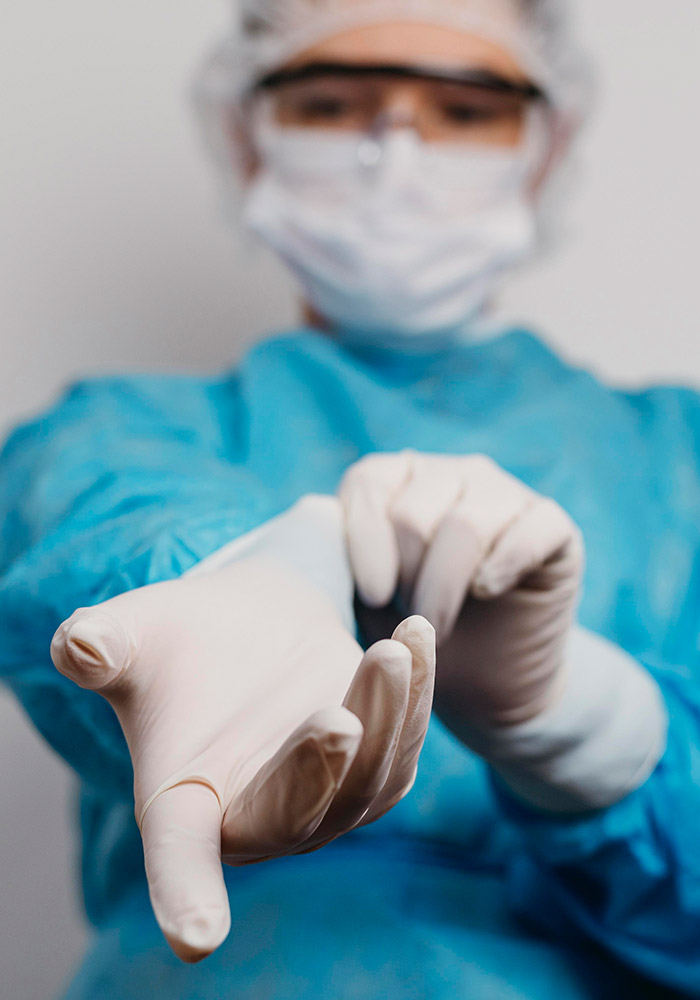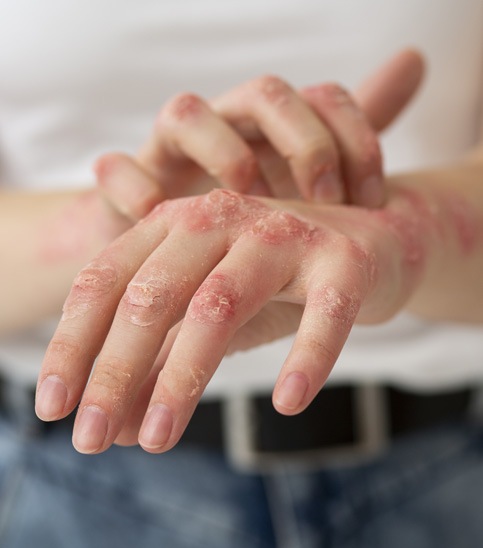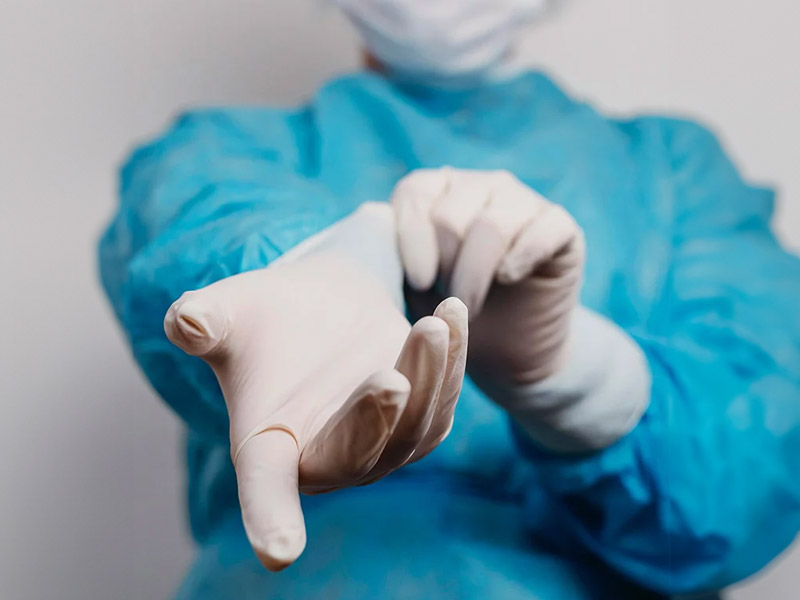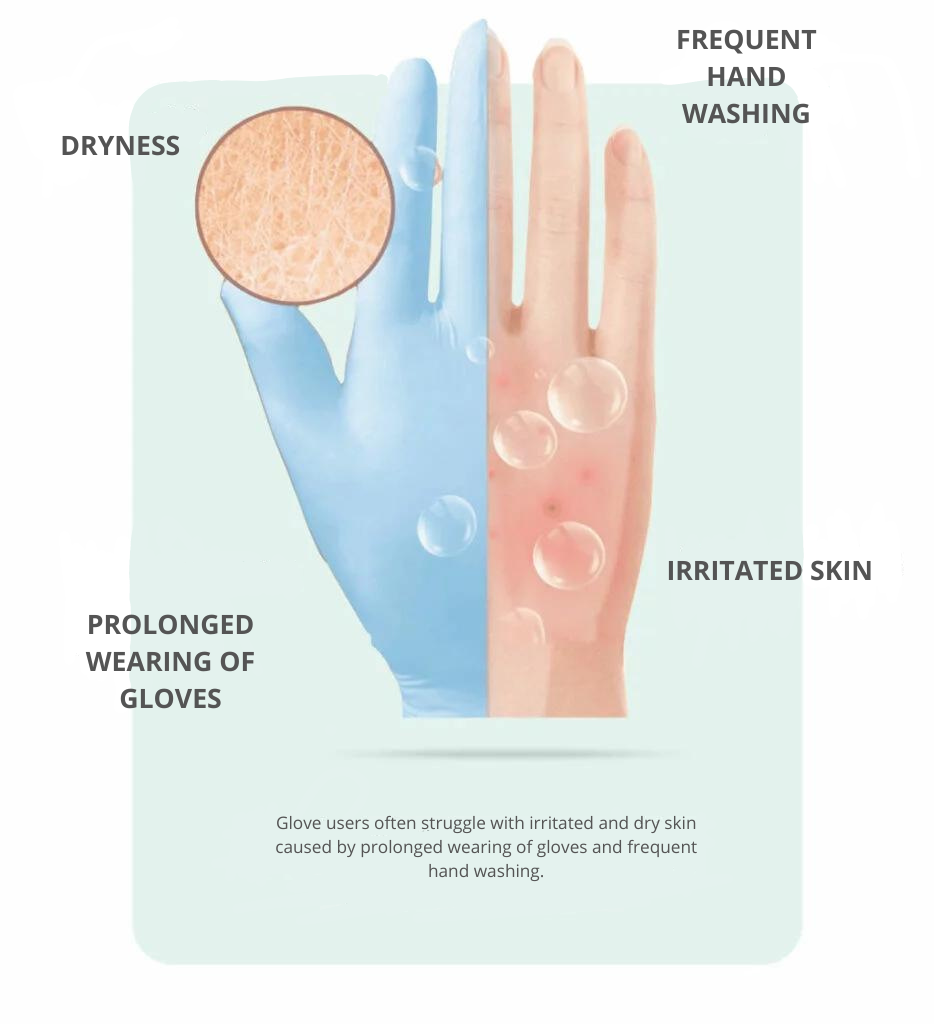
Becare’s commitment to hand protection
Why colloidal oat?
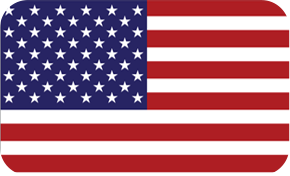
In June 2003, colloidal oat received approval from the U.S. Food and Drug Administration (FDA) for use as a skin protectant.

In Commission Decision (EU) 2019/701 of April 5, 2019, colloidal oatmeal extract was listed as an ingredient for use in the labeling of cosmetic products.

Colloidal oatmeal has been classified by the FDA and Health Canada as a “skin protectant” and a “natural health product (NHP).”
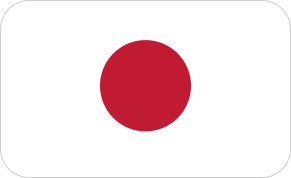
The Japanese Cosmetic Industry Association (JCIA) has identified colloidal oatmeal extract as one of the cosmetic ingredients available in Japan that should be used in accordance with the regulations of the Pharmaceutical and Medical Devices Law (PMDL).
Technology
What is COATS®?
COATS® stands for Colloidal Oatmeal System. It is a patented technology for coating the inside of gloves with a clinically proven skin protectant.
Not just protection
Oatmeal has been used as a remedy to soothe itching and irritation associated with various skin conditions. In June 2003, colloidal oatmeal received FDA approval for use as a skin protectant. Leveraging the unique benefits of colloidal oatmeal, HARTALEGA combined this knowledge with innovative glove manufacturing technology to offer COATS®—a revolutionary glove that goes beyond protection.
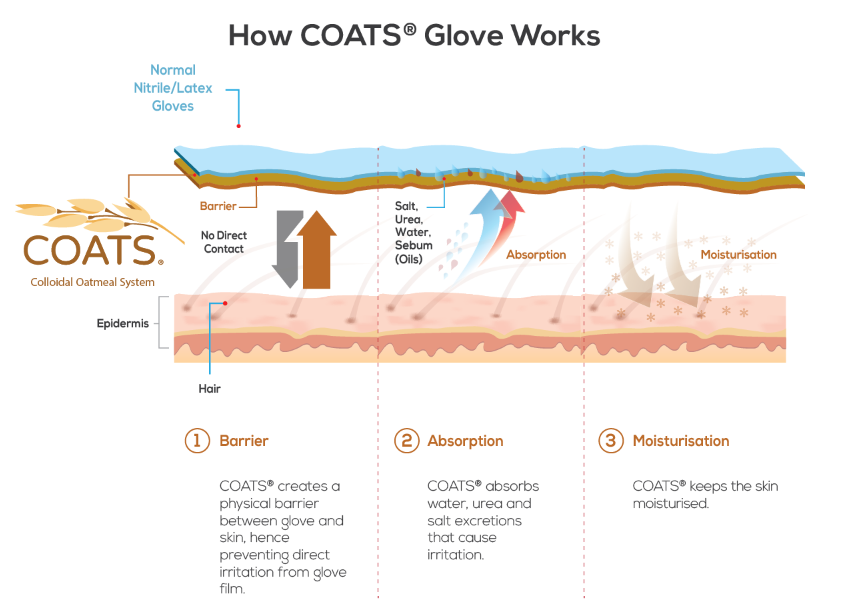
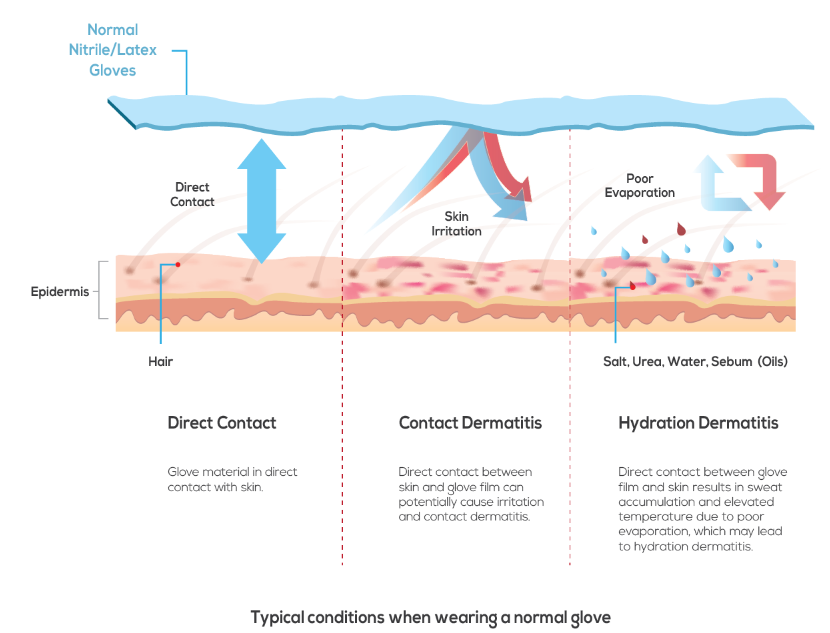
Efficacy
Efficacy of COATS® Gloves
Improvement in Skin Hydration
COATS® gloves demonstrated a 4‑fold increase in skin hydration improvement compared to non-coated nitrile gloves, with a remarkable 106.1% improvement from baseline.
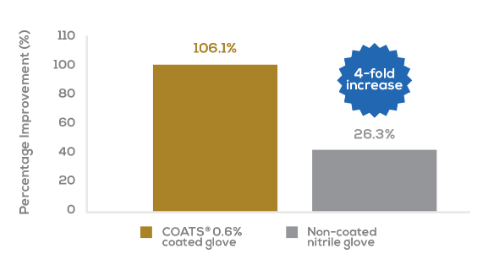
Reduction in Water Evaporation
COATS® gloves showed a 11.9% reduction in water evaporation as opposed to 6.1% increase in water evaporation observed in non-coated nitrile gloves. The higher the water loss, the greater the likelihood for skin damage.
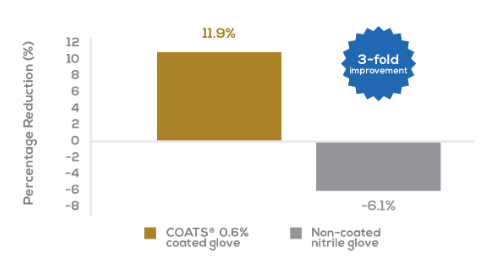
Efficacy of Colloidal Oatmeal
Colloidal oatmeal has a long history of beneficial use in dermatology. It is a natural product that has an excellent safety record and has demonstrated efficacy for the treatment of atopic dermatitis, psoriasis, drug-induced rash and other conditions.
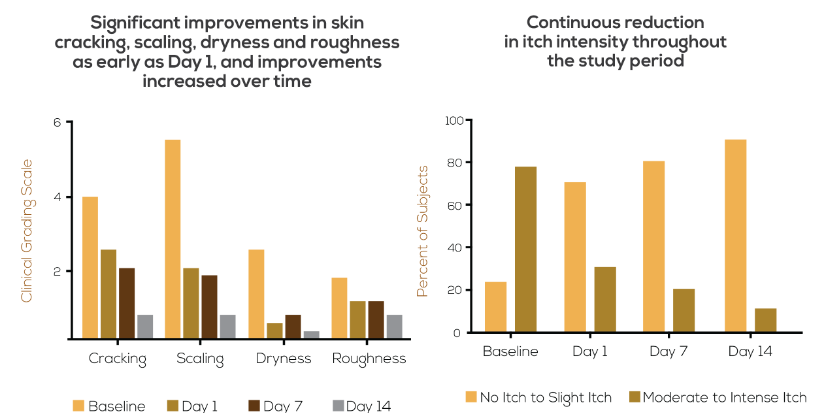

Dermatological benefits of colloidal oatmeal

Why Colloidal Oatmeal is Great for Skin?
Great protection for sensitive skin
Colloidal oatmeal has been used for decades to soothe and ameliorate atopic dermatitis and other pruritic and/or xerotic dermatoses. The Centers for Disease Control and Prevention (CDC) also suggests that colloidal oatmeal baths could help relieve itching in cases of shingles (Herpes Zoster).3 Colloidal oatmeal’s properties are truly beneficial for glove users, in particular, the healthcare workers as according to a study in the British Journal of Dermatology published in July 2017, they are more likely to get hand eczema than the general population.
Soothing properties
Colloidal oatmeal is the key to soothing sensitive skin, especially effective towards itches and irritations. Colloidal oatmeal binds to your skin and locks in moisture, giving your skin a chance to rehydrate. It also helps balance your skin’s natural pH levels.
Anti-inflammatory properties
In June 2003, colloidal oatmeal has gained the U.S. Food and Drug Administration (FDA) approval to be used as a skin protectant. Colloidal oatmeal has a long history of beneficial use in dermatology. Oatmeal possesses antioxidant and anti-inflammatory properties and its administration is effective on a variety of dermatologic inflammatory diseases.
Moisturising properties
Hand washing is one of the most effective ways to prevent the spread of germs. However, frequent hand washing removes protective lipids from the skin barrier and as a result, the skin becomes less pliable and more prone to cracks and fissures. The high concentration of starches and beta-glucan in oats are factors leading to the protective and water-holding functions of oat.4 Colloidal oatmeal creates a film on top of the skin’s surface, which enable reduction of Trans Epidermal Water Loss (TEWL) while preventing irritants from penetrating the skin.
Barrier-repair properties
The finely grounded texture of Colloidal Oatmeal lets the molecules form a thin skin-like protective layer over the skin barrier that keeps moisture in and irritants out. Extracts of colloidal oatmeal were found to induce the expression of genes related to epidermal differentiation, tight junctions and lipid regulation in skin, and provide pH-buffering capacity. Colloidal oatmeal boosted the expression of multiple target genes related to skin barrier in an in vitro model of atopic dermatitis.
Features
MARKET SEGMENT
Healthcare
TYPE
Diagnostic Gloves
CUFF LENGTH
Standard
STERILE
No
COLOUR
Dawn blue
REGULATORY COMPLIANCE
Nitrile Powder Free : FDA 510(k), ROHS Directive 2002/95/EC, EU 2016/425, REACH, EU 10/2011, EC 1935/2004, MDR 2017/ 745
CLASSIFICATION
Nitrile Powder Free: Class I (FDA), Class I (MDR 2017/745), Category 3 (BfR XXI), Category III (PPER 2016/425)
Segmenty rynku

Healthcare
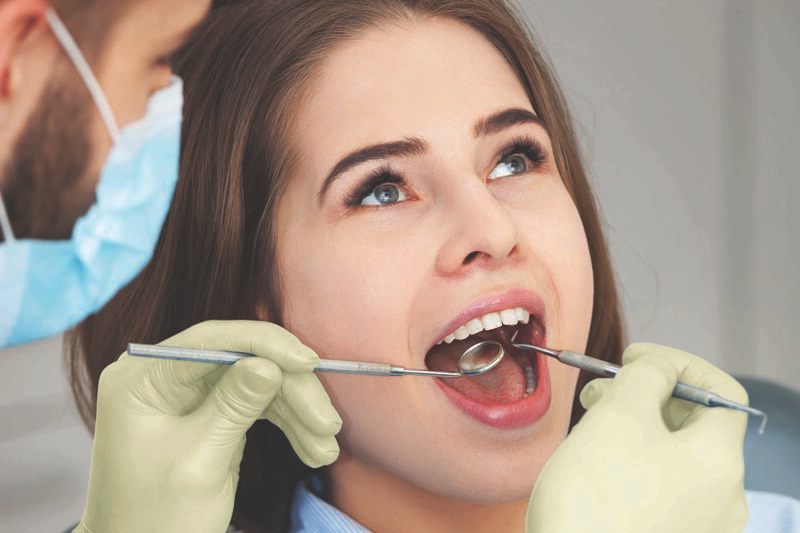
Dentistry
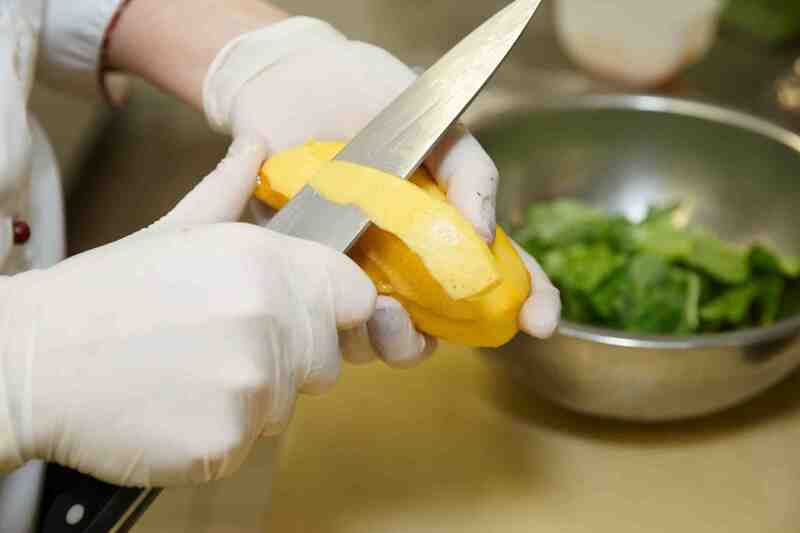
Food
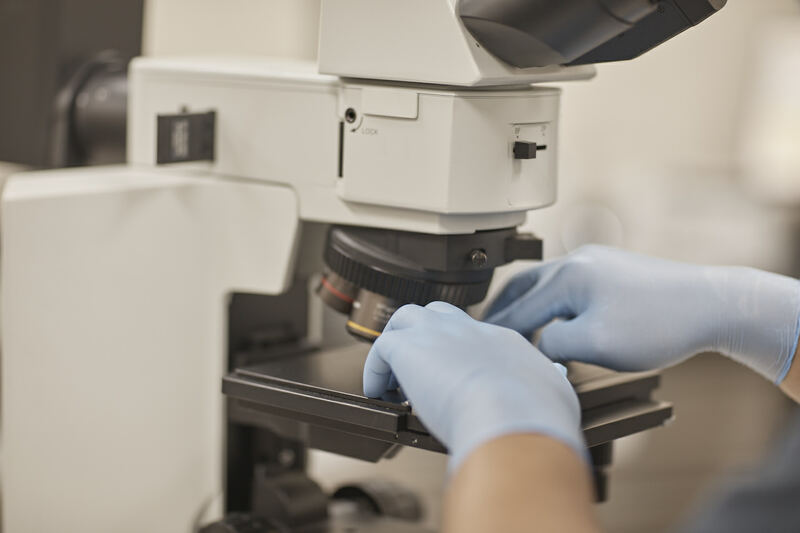
Life Sciences
Frequently Asked Questions (FAQs)
The oat (avena sativa) is a cereal grain grown and harvested for its seeds, which are used in a wide variety of products, including food, agriculture, health and skincare products.
Colloidal oatmeal, the compound utilised in COATS® gloves, is made by milling the oat seeds into a fine powder. Colloidal oatmeal is recognised by the FDA as a skin protectant. COATS® gloves utilise the unique benefits of colloidal oatmeal by including a coating of colloidal oatmeal inside the glove. COATS® gloves moisturise your hands while you wear them, replacing moisture stripped from the skin, removing dead skin cells, relieving itch and irritation, repairing damages from other chemicals and calming the skin
Gluten is a mixture of proteins that occur naturally in wheat, rye, barley and crossbreeds of these grains.3 Gluten can be found in foods containing these ingredients, including bread, pasta, cakes, cereal and various sauces and dressings. For most people, gluten is entirely safe to eat, and is a healthy source of protein and fibre. However, for people who suffer from coeliac disease, gluten can cause serious medical problems.
Coeliac is a medical disease in which the immune system reacts abnormally to gluten, causing small bowel damage. Coeliac disease is a genetic predisposition, meaning people who suffer from the disease are born with genes that may result in the development of gluten intolerance. Coeliac disease is estimated to affect 1% — 2% of the population.5 If undiagnosed, coeliac disease can lead to chronic system inflammation, poor nutrition and malabsorption of nutrients. Coeliac disease cannot be cured, thus people who suffer from this disease must maintain a lifelong gluten–free diet.
Oats do not naturally contain gluten. However, due to the demands of the modern agricultural market, oat crops are often grown in close proximity to, or on plots of land previously used to grow, wheat, barley and rye crops, which may lead to cross-contamination.
Yes. While minute traces of gluten due to cross-contamination may be in the colloidal oatmeal coating of COATS® gloves, topical exposure to gluten is completely safe for coeliac sufferers. According to the Centre for Coeliac Research, “…it is the oral ingestion of gluten that activates the immunological cascades leading to the autoimmune process typical of coeliac disease”. That is, the adverse symptoms associated with coeliac disease occur only when gluten is ingested orally. The presence of gluten in products designed for external use, in particular the application of gluten products to the skin has been deemed safe by the Centre for Coeliac Research. “If you have coeliac disease, then the application of gluten containing products to the skin should not be a problem, unless you have skin lesions that allow gluten to be absorbed systematically in great quantities” – Dr Alessio Fasano, Medical Director of the Centre for Coeliac Research. In fact, it is generally agreed that gluten molecules are too large to be absorbed through the skin.8 As always, you should practice appropriate hand washing techniques as part of routine hygiene practices when you anticipate contact with potentially infectious people or substances
No. The colloidal oatmeal coating is present only inside COATS® gloves, meaning the patient does not come into contact at all with this coating. If donned and doffed correctly, the inside of the glove should not be exposed to the patient. If, through circumstance, the patient was to come into contact with the inside of the glove, this would cause no adverse harm to the patient, as topical exposure to gluten is completely safe for coeliac sufferers. Further, COATS® gloves require only a minimal coating of colloidal oatmeal to achieve the unique skin benefits. Thus, the traces of gluten (if any) in the colloidal oatmeal coating would be extremely small. Clinical studies that have examined the benefits of colloidal oatmeal on the skin have found that it is a safe and effective treatment for a wide range of skin conditions.
Why Colloidal Oatmeal is Great for Skin?
The gloves are an excellent choice for individuals seeking durability and chemical resistance. Unlike latex gloves, they offer better protection against harsh chemicals, oils, and mechanical damage.
Nitrile gloves are used in many industries, such as medicine, the food industry, paint and varnish production, hairdressing, the beauty industry, and cosmetics.
Excellent protection for sensitive skin
Colloidal oatmeal has been used for decades to alleviate symptoms of atopic dermatitis and other dermatoses accompanied by itching and/or xerosis. The Centers for Disease Control and Prevention (CDC) also suggests that oatmeal baths can help relieve itching associated with shingles. The properties of colloidal oatmeal are beneficial for glove users, particularly healthcare workers. According to a study published in the *British Journal of Dermatology* in July 2017, these individuals are more prone to hand eczema than the general population. Nitrile gloves are highly resistant to mechanical damage. Nitrile gloves with an inner layer of colloidal oatmeal are an ideal choice for people working in all conditions.
Nitrile gloves are valued for their high resistance to tearing, chemicals, cytostatics, oils, and solvents. Due to these properties, they are becoming increasingly popular in the medical field and other industries that require reliable protection.
Anti-inflammatory properties
In June 2003, a colloidal oat extract was approved by the U.S. Food and Drug Administration (FDA) for use as a skin protectant. Oats have a long history of beneficial use in dermatology. Colloidal oatmeal possesses antioxidant and anti-inflammatory properties, and its application is effective in treating various inflammatory dermatological conditions. It is worth mentioning that nitrile gloves are often chosen for medical procedures, cosmetic treatments, and cleaning tasks because they are more resistant to aggressive chemicals, oils, and mechanical damage than latex gloves.
Sources:
1. Aspen Clinical Research Report OATCLI4C. A Clinical Study to Measure the Effects of COATS® 0.6% Coating Concentration Blend on the Skin vs ‘Non-Coated Nitrile Glove (Control): To Demonstrate the Benefits of this Coating as a Protectant; and the Reparative Role on Damaged Skin. (2014).
2. Drower, E., Reyna, R., Wilson, K., Fercho, D., & Schmidt, T. (2016). Evaluation of Colloidal Oatmeal-Coated Exam Gloves on Skin of Healthcare Workers. American Journal of Infection Control, 44.
3. US Food and Drug Administration (2014). ‘Gluten-Free’ now means what is says. Consumer Health Information, August 2014 Bulletin.
4. State Government of Victoria (2015). Gluten-free diet. Retrieved from https://www.betterhealth.vic.gov.au/health/HealthyLiving/gluten-free-diet
5. BioMed Central Ltd. (2013). A novel serogenetic approach determines the community prevalence of celiac disease and informs improved diagnostic pathways. Retrieved from http://bmcmedicine.biomedcentral.com/articles/10.1186/1741–7015-11–188.
6. Coeliac Australia (2015). Coeliac Disease. Retrieved from http://www.coeliac.org.au/coeliac-disease/.
7. Gluten Free Dietitian (2015). Personal Care Products: Do you need to worry about gluten? Retrieved from http://www.glutenfreedietitian.com/personal-care-products-do-you-need-to-worry-about-gluten/.
8. Howard, D. (2015). A Glutton for Gluten: Should Skin Care be Gluten-Free? Retrieved from https://education.dermalogica.com.au/Content/docs/AGluttonforGluten.pdf
9. European Medicines Agency (2008). Assessment Report on Avena Sativs L., Herba and Avena Sativa L., Fructus

80% of nurses and doctors suffer from hand conditions – an overlooked threat
Contact Form
Skamex S.A.
ul. Kopcińskiego 62 D
90–032 Łódź
Check the location on Google Maps
Phone:
+48 42 677 14 11Working hours:
Mon. – Fri.:
8:00- 16:00
Registered at the District Court for Łódź-Śródmieście, XX Department of the National Court Register
-
NIP: 5542980836
-
REGON: 384767215
-
KRS: 0001055638
Do you want to ask a question or get information about the offer?
Use the contact form.

Wiadomość została wysłana.
Skontaktujemy się z Tobą niezwłocznie.
 Polski
Polski
